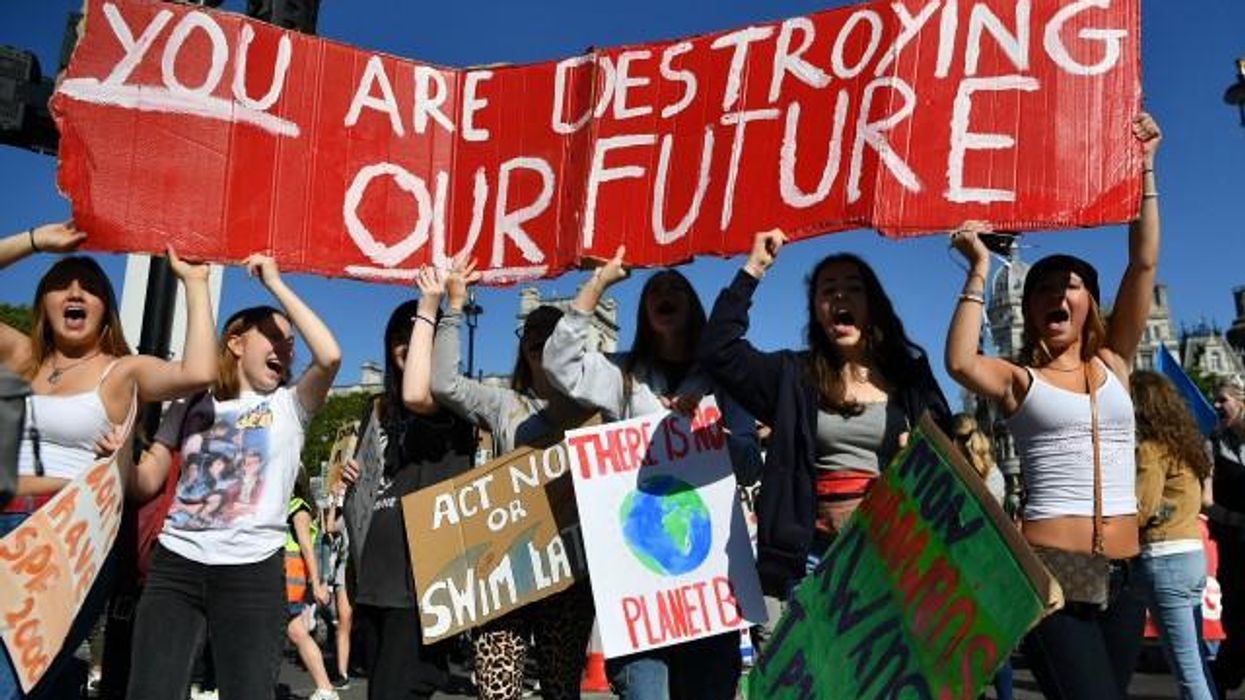Saudi Aramco Leads Fossil Fuel Firms in 'Sportswashing' Sponsorships: Analysis
"Oil companies who are delaying climate action and pouring more fuel on the fire of global heating are using Big Tobacco's old playbook and trying to pass themselves off as patrons of sport."
Aramco, the state-owned Saudi firm, has the most sports sponsorships of any fossil fuel company in the world, with $1.3 billion in active deals, followed by Ineos, TotalEnergies, and Shell, according to a Wednesday report that compares the industry's methods to those once used by Big Tobacco.
The 23-page report, Dirty Money: How Fossil Fuel Sponsors Are Polluting Sport, details one of the ways in which countries and corporations "sportswash" their reputations: sponsorships of popular athletes, teams, events, or leagues. Other means of sportswashing, such as Saudi Arabia's development of a new golf tour and purchase of major soccer clubs, aren't included in the analysis, which was produced by the New Weather Institute (NWI), a climate think tank.
Aramco, which is about 98% owned by the Saudi Arabian government, is the most profitable company in the world and is responsible for over 4% of global carbon emissions since 1965, the most of any firm. It pays out more than $300 million per year in sports sponsorships in motorsports, soccer, golf, and cricket, with active deals worth about $1.3 billion over their lifespans, the report says.
Overall, the report authors found 205 sponsorship deals by the fossil fuel industry worth a total of $5.6 billion.
"Oil companies who are delaying climate action and pouring more fuel on the fire of global heating are using Big Tobacco's old playbook and trying to pass themselves off as patrons of sport," Andrew Simms, NWI's co-director, said in a statement.
The report emphasizes the negative impact fossil fuel companies have not just on the climate but also, more immediately, on public health—and the ability to play sports—citing research that shows the burning of their products leads to millions of excess deaths per year.
"Air pollution from fossil fuels and the extreme weather of a warming world threaten the very future of athletes, fans, and events ranging from the Winter Olympics to World Cups," Simms said. "If sport is to have a future it needs to clean itself of dirty money from big polluters and stop promoting its own destruction."
The dirty money polluting sport - our new report on how oil and gas companies are exploiting sport even as they destroy the climate conditions for it 👇👇👇 https://t.co/d4AItJnglv
— Andrew Simms (@AndrewSimms_uk) September 18, 2024
The term sportswashing, related to whitewashing and greenwashing, has gained use in the last decade as a way of describing efforts to distract attention from wrongdoing through affiliation with popular sports. Critics often levy the charge at Saudi Arabia and other Gulf states.
Saudi Arabia's sovereign wealth fund, which draws financing from Aramco, has reportedly spent more than $2 billion on its LIV Golf tour in the last three years. Saudi Arabia is expected host the World Cup in 2034, and neighboring Qatar did so in 2022, spending over $200 billion.
Saudi Arabia and Aramco have long been accused of greenwashing. Yet poor environmental credentials aren't their only public relations issue. The country, in addition to sourcing its wealth from planet-destroying fossil fuels, is led by an authoritarian regime that has a terrible human rights record, one under more scrutiny since the 2018 killing of Saudi journalist Jamal Khashoggi, who worked for The Washington Post.
In response to the sportswashing critique, Saudi leaders have been blunt and defiant.
"If sportswashing is going to increase my GDP by 1%, then we'll continue sportswashing," Crown Prince Mohammed bin Salman, the country's de facto leader, told Fox News last year.
In addition to Aramco, the NWI report focuses on three Western fossil fuel companies. Shell and Ineos, two U.K.-based multinationals, each spend more than $100 million per year on sponsorships in a wide variety of sports. TotalEnergies, a French multinational, spends more than $60 million.
The NWI report recommends that sports organizations institute tobacco-style bans on fossil fuel sponsorships and improve due diligence on donors and sponsors.


